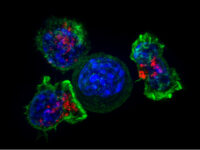As you walk across campus on a warm fall day, you pass by what looks like a small, bright-yellow chunk of coral rising up from under some mulch. A few days later as you walk the same route — do you remember it correctly, or did that yellow mushroom-like blob move?
That blob is no mushroom. Called slime mold, this single-celled plasmodial organism can move in search of food — unlike any mushroom — and is classified under the Kingdom Protista. Most plasmodial slime molds are only a few centimeters wide, but a few may grow up to a foot in diameter. Somehow, they are still composed of only one cell. Unlike other cells, which contain one nucleus, this cell contains millions. And though it has no brain, it can definitely outcompete you in a mathematical processing contest.
How do we know this plasmodial cell can compute problems? Scientists have seen a single slime mold solve the same problems that challenge teams of human mathematicians and engineers. They solve complex “shortest path” problems linking thousands of points together, which are challenging to solve even for a computer. All of this is based on slime mold’s decision-making skills while it searches for food and avoids adverse conditions, like strong light. Slime mold can also anticipate periodic events and habituation, so it can even adapt to and learn from new environments. To look for food, the main cell sends out “reconnaissance branches,” and if these branches find something to eat, the slime mold surrounds the food and creates ropy tunnels to transmit nutrients. This creates a matrix of branches. By substituting food with the concept of “a population” and light with “obstacles,” researchers found that slime mold can create a complex map.
In an experiment, researchers from Hokkaido, Japan placed oat flakes — a favorite food of slime molds — in a pattern that imitated population-dense centers in Japan. As the slime mold spread over the piles of oat flakes, it stretched and morphed using its nutrient-carrying branches. After a few hours, a familiar pattern formed. The brainless cell created a network that nearly mirrored that of the Japanese rail system.
While replicating transit systems is a cool parlor trick, slime mold researchers are working on mapping things on an infinitely larger scale. Instead of cities, slime mold is linking galaxies in a new 3D model to better understand how the galaxy-connecting cosmic web is woven.
The brainless cell created a network that nearly mirrored that of the Japanese rail system.
The cosmic web is perhaps the largest structure in the universe. It is made of a web of dark matter and gas connecting and fueling stars. However, we don’t exactly know where much of it is located. This matter is either too spread out or “too dark” to show up widely in imaging. Therefore, knowledge of its layout is limited.
A group of researchers created a computer algorithm following slime mold’s behavior. Then, they applied data from the Sloan Digital Sky Survey, which contained the locations of 37,000 galaxies. The algorithm created a 3D map linking these galaxies. The team then pointed telescopes at locations predicted to contain pieces of the cosmic web. Analyzing the UV light indicated hydrogen gas far away from other galaxies. This means the model accurately predicted where the cosmic web is located.
The cosmic web is perhaps the largest structure in the universe. It is made of a web of dark matter and gas connecting and fueling stars.
“You can almost see, especially in the map of galaxies in the local universe from the Sloan data, where the filaments should be,” lead researcher Joseph Burchett of the University of California, Santa Cruz said in a NASA press release. “The slime-mold
model fits that intuition impressively. The structure that you know should be there is all of a sudden found by the computer algorithm.”
This biological model has been suggested for solving medical problems too, like modeling the way blood vessels grow around tumors. With slime mold generating brilliant biological models, we may be able to understand a little more about our universe.
The Astrophysical Journal Letters (2020). DOI: 10.3847/2041-8213/ab700c
Science (2010). DOI: 10.1126/science.1177894




